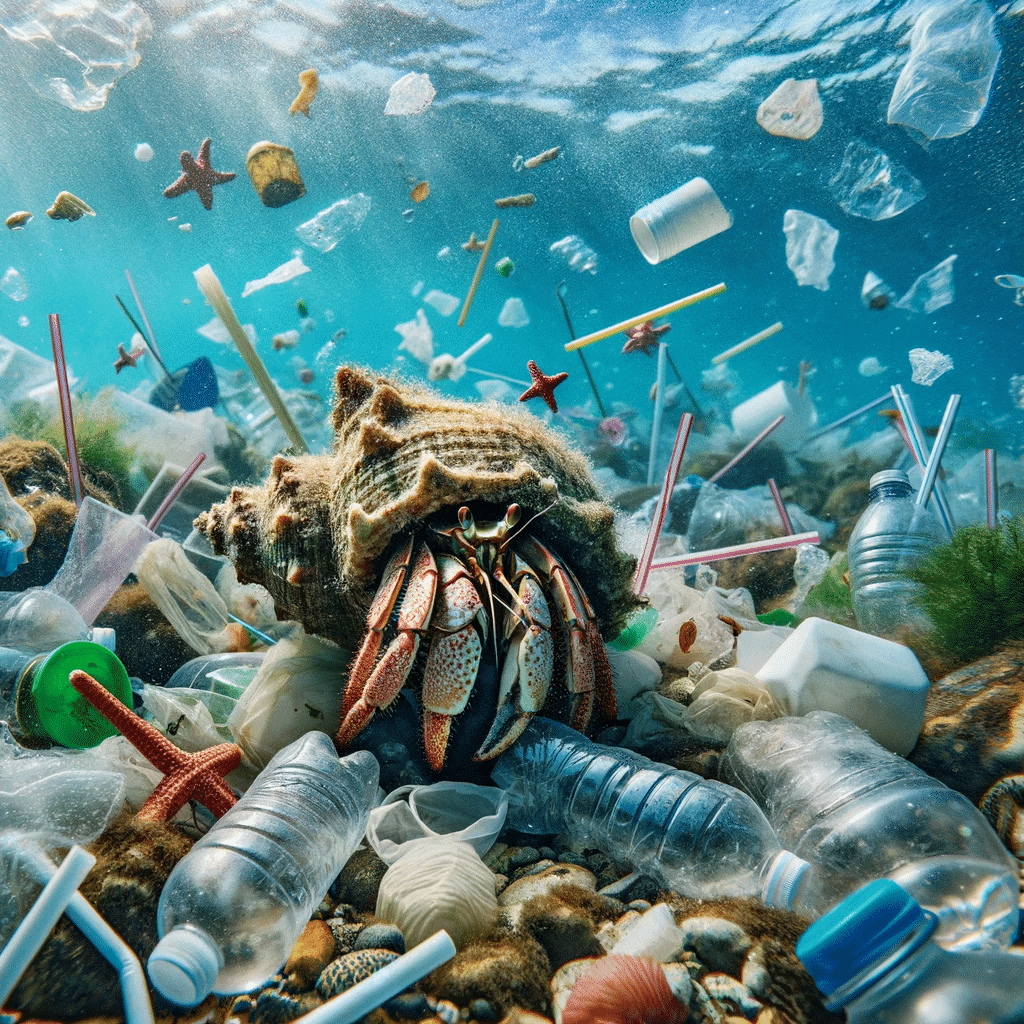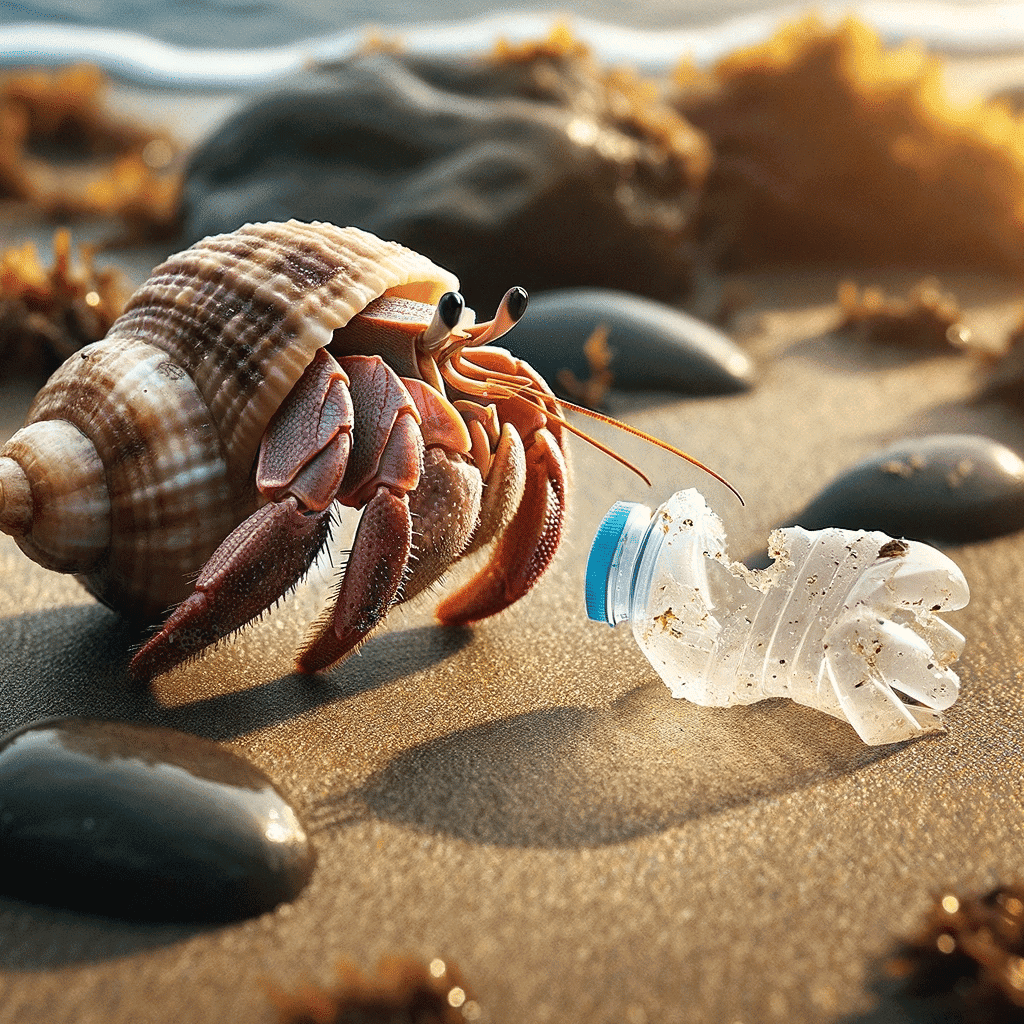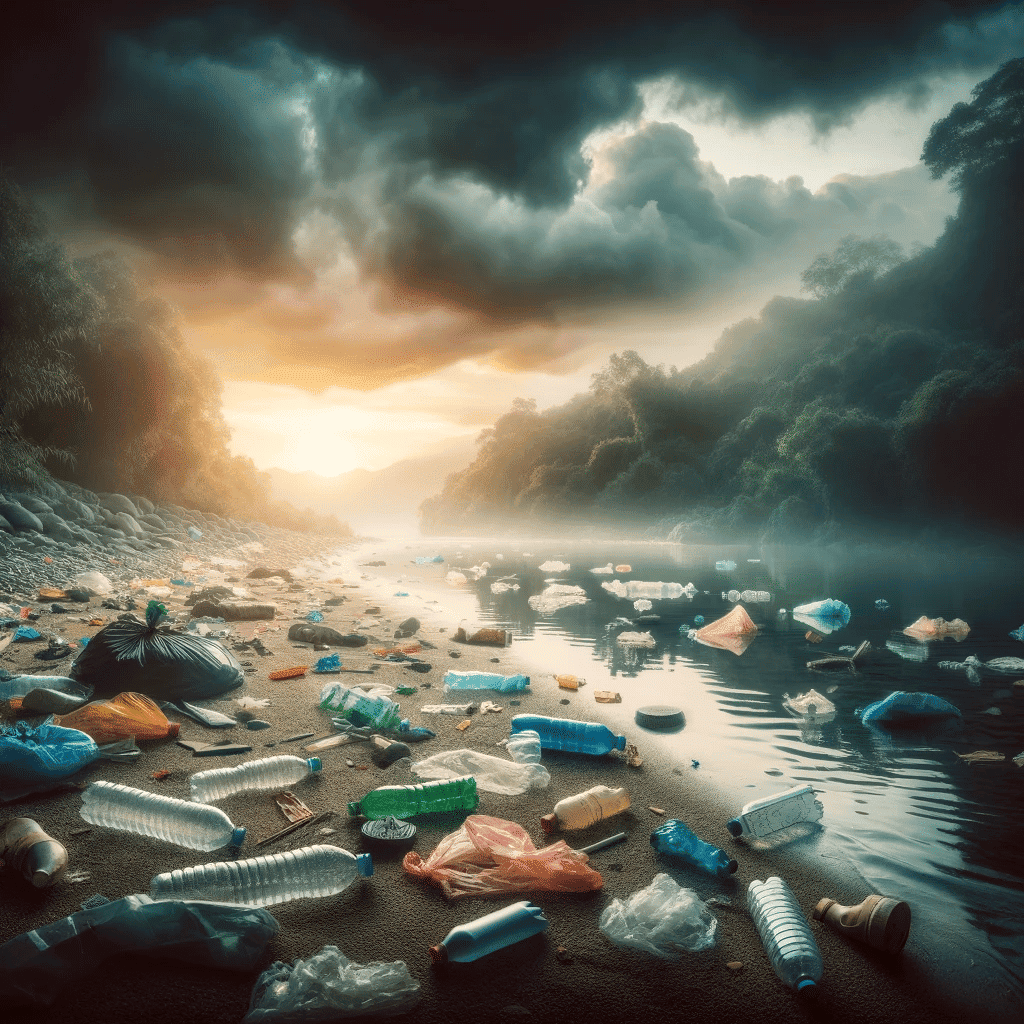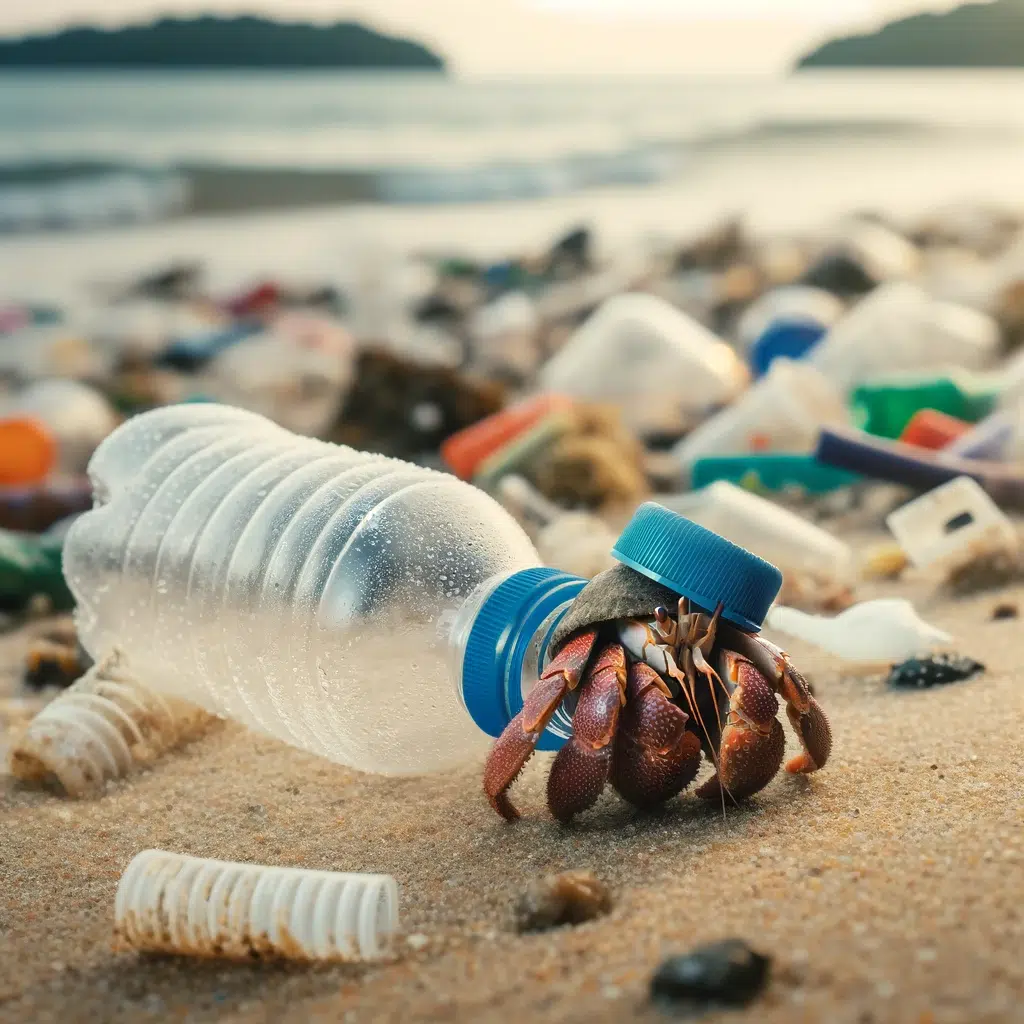In a distressing turn of events, marine biologists have observed an increasing number of hermit crabs discarding their natural shells in favor of plastic debris. This bizarre phenomenon, emerging from the pollution-ridden coasts and waters across the globe, raises significant concerns about the health of marine ecosystems and the perplexing behaviors of these crustaceans.
The Natural Shell: A Hermit Crab’s Refuge

Hermit crabs, known for occupying the shells of sea snails, rely on these natural casings for protection and survival. As they grow, these crabs often switch shells, typically opting for larger and intact shells that can accommodate their increased size. This natural process is crucial, as a hermit crab’s shell is not just a home but a fortress against predators and environmental hazards.
Plastic Invasion: An Unnatural Replacement

The invasion of plastics into the marine environment has been a topic of environmental concern for decades. However, the recent trend of hermit crabs using plastic pieces as shells is alarming. Researchers have observed crabs occupying a range of plastic debris, from bottle caps to small containers, mistaking them for suitable homes. This unnatural adaptation is a direct consequence of the overwhelming presence of plastic waste in their habitats.
Why Plastic? The Question of Adaptation

The reason behind this shift is a combination of necessity and mistaken perception. In areas heavily polluted with plastic, natural shells are becoming scarce. Hermit crabs, in their desperate search for a new home, often end up choosing plastic pieces that resemble shells in size and shape. Moreover, younger crabs, who have not experienced enough natural shells, might not distinguish between organic and plastic materials.
Consequences: From Protection to Peril
The implications of this trend are grave. Plastic does not provide the same level of protection as natural shells. It is more susceptible to damage, offers less insulation, and can even release toxic substances. Additionally, plastic debris can trap and immobilize crabs, leading to starvation and increased vulnerability to predators.
The Bigger Picture: Environmental Impact
This phenomenon is a stark reminder of the far-reaching impacts of plastic pollution. The adaptation of hermit crabs to plastic shells signifies a larger ecological imbalance. It underscores the need for urgent action in managing waste, particularly plastic, and preserving natural habitats.
Moving Forward: Conservation and Awareness
To address this issue, conservation efforts must focus on reducing plastic pollution and restoring natural habitats. Public awareness campaigns and policies aimed at minimizing plastic waste are critical. Additionally, further research into the behavior of hermit crabs and the impact of plastic on marine life is essential to develop effective conservation strategies.
In conclusion, the sight of hermit crabs inhabiting plastic debris is not just an oddity but a dire warning from nature. It reflects the urgent need for collective action in tackling environmental challenges and preserving the delicate balance of marine ecosystems.
Up next:
Crabs Invading Canada’s Pacific Coast
Discovering the Hidden Lives of Sand Crabs
Crab-Guided Exploration Unveils a Spectacular Underwater World
Join our Forum for free today!

- The Kleptomaniac Cat That Rules Houston - July 20, 2024
- Elephant Makes a Lifelong Friend at Sanctuary in Tennessee - July 14, 2024
- Evidence For World’s Oldest Fossilized Forest Discovered in New York - July 11, 2024

